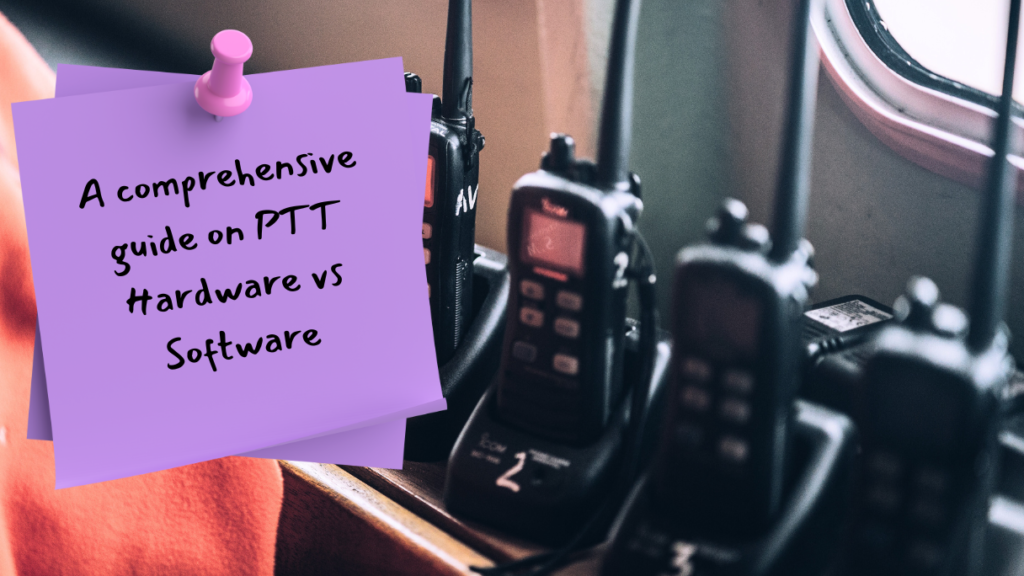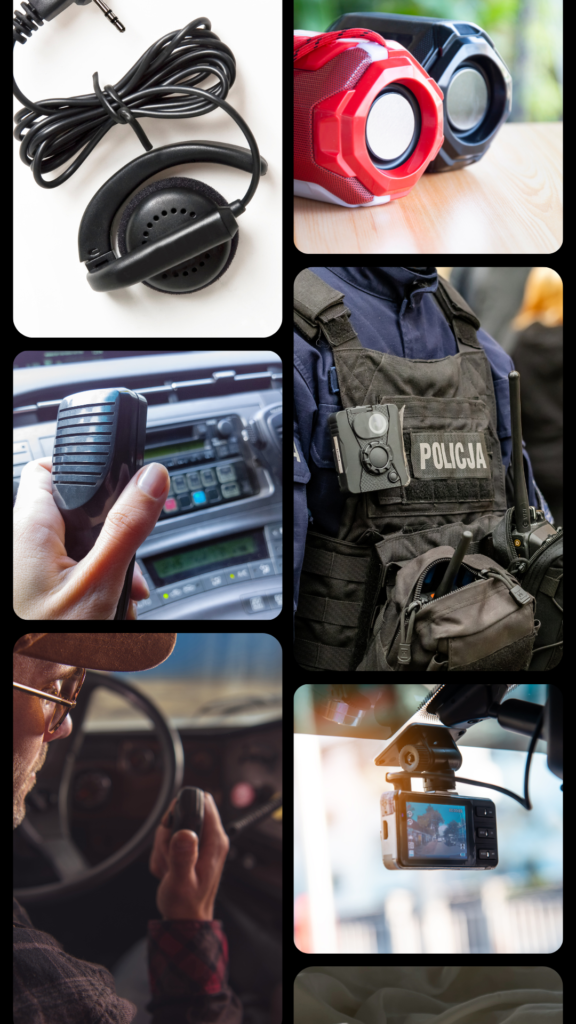Walkie-Talkie serves as a very powerful tool in the hands of the frontline workers. The earliest form of the walkie-talkie dates back to the 1930s. The credit for the invention of the walkie-talkie is often given to Donald L. Hings and Alfred J. Gross, who independently worked on portable two-way radios.
These early walkie-talkies were crucial for military communication. They provided portable and wireless communication between soldiers on the battlefield. They played a significant role in improving coordination and situational awareness during military operations. After the war, walkie-talkies found applications in various industries and eventually became popular for recreational use and public safety.
Push-to-talk (PTT) communication has undergone a remarkable transformation. Smart devices such as phones and tablets emerging as the predominant platforms for this once military-centric technology. The rise of push-to-talk applications, which users can install on their devices, has ushered in a new era of instantaneous voice communication that transcends geographical boundaries.

Every Smart Device is Walkie Talkie
Any device, be it Android or iOS-based, can serve as a walkie-talkie device. All it needs is excellent software or a perfect app. Moreover, mobile applications are more hassle-free than any software. You just need the internet, you can communicate using apps from virtually anywhere.
What adds to its appeal is its scalability. You can effortlessly incorporate additional users, workspaces, and channels within the app without the need for significant infrastructure modifications. This enhances its reliability for expanding businesses.
PTT apps often come with additional features such as text messaging, multimedia sharing, and group calling. Integrating it with other business applications and services is common, providing a seamless communication experience
What problems does it solve?
- With older solutions, you need the user on the other side to be active, with apps your communication is recorded as well as end-to-end encrypted,
- You could stay all day long on the call, this was not the case with intercoms
- You can be live on multiple channels at the same time.
- Hardware like walkie-talkies are expensive and also hard to maintain
- Also, it is the fastest way to communicate.
Accessories
Though accessories are not necessary to have with these software/apps, there might be situations when these accessories combined with the app, give better performance.
- Some smartphones are equipped with a physical PTT button.
- PTT audio accessories assist drivers in maintaining focus on the road.
- Earpieces minimize disruptive noises in public or customer areas at a worksite.
- Accessories enable discrete communication, providing an advantage for security teams without drawing attention.

You see, these software and apps solve every problem you might encounter, then too there might be a few factors where you might consider hardware, let’s explore.
Push-to-Talk Hardware
PTT hardware consists of dedicated devices that are purpose-built for quick and efficient communication in various settings. These devices often resemble traditional two-way radios but are equipped with modern technology to facilitate instant voice communication. A key feature of PTT hardware is a physical button (often referred to as a PTT button) that users press to initiate communication. This button is a defining characteristic of PTT devices
What problems does it solve?
- PTT hardware, such as dedicated radios or specialized devices, is designed for rugged environments where durability and reliability are paramount.
- Hardware-based PTT systems offer instant communication without the need to unlock a device or navigate through an app.
- It is purpose-built for communication, with a focus on the core functionality of push-to-talk.
- In certain industries, especially those requiring high levels of security and privacy, it may be preferred due to its dedicated and closed-system nature.
Differentiation Between Apps and Hardware
| Feature | Apps/Softwares | Hardware |
| Device | Typically runs on smartphones or computers and has virtual button on the screen or interface. | Dedicated physical devices (two-way radios, etc.) and has a physical Push-to-Talk button for tactile use. |
| Flexibility | Can be installed on a variety of devices and requires an internet connection. | Often cost-effective, some apps are free. Also, these are easily scalable by adding users via app settings. |
| Cost & Scalability | Feature-rich may include text, multimedia, and group communication. | Initial hardware investment may be higher and scalability may require additional hardware purchases. |
| Feature | Relies on the device or app’s security features and app settings. | Focuses primarily on core Push-to-Talk functionality. |
| Durability | Relies on the durability of the device it’s installed on. | Specifically designed for rugged and challenging environments. |
| Privacy | Relies on device or app’s security features and app settings. | Can offer enhanced security features for closed communication systems. |
| Use Cases | Versatile, suitable for a range of industries | Commonly used in industries requiring instant and reliable communication. |
Talker – Instant Communication, Streamlined Collaboration and Unlimited Possibilities
Talker takes instant communication to the next level by leveraging the power of push-to-talk technology. With Talker, connecting with your team is as easy as pressing a button. While Talker’s push-to-talk feature is undoubtedly its standout function, this innovative app goes beyond voice communication. Talker allows users to send text messages with attachments, providing a versatile platform for sharing important information. Whether you need to send a document, an image, or any other file, Talker’s messaging feature has got you covered.
Streamlining teamwork
Managing a team efficiently is vital for any organization, and Talker empowers administrators with powerful tools to streamline teamwork. Admins can add users to the app, ensuring that all team members are connected. They can also create new channels, allowing for organized and targeted communication within specific groups. Additionally, Talker’s multi-workspace feature enables admins to manage multiple teams or departments seamlessly. Admins can also see the live location of users, enhancing safety and optimizing workflow. Also a newly launched, deeply integrated feature of Talker – Check In and Check Out allows the admin to view the attendance of employees on Talker’s next-level dashboard.
Also Read: Check In and Check Out feature in Walkie Talkie Apps
